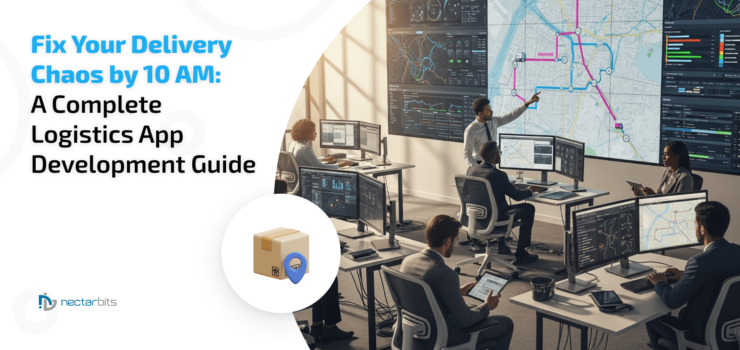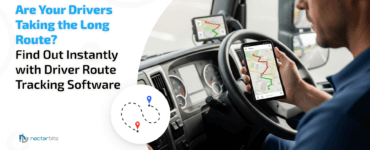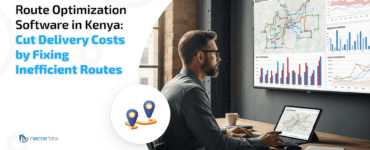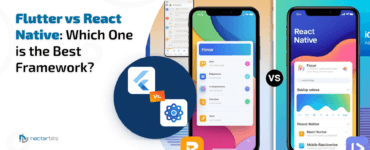The 10 AM Phone Call Nobody Wants
Picture this: It’s 9:47 AM on a Tuesday. Your phone rings. It’s Driver 7 asking why he’s scheduled to be in two places at once. Before you can answer, Driver 3 calls on the other line—she’s already burned through a quarter tank driving back and forth because someone mixed up the route sequence. Your email dings. A customer wants to know where their “morning delivery” is. It’s going to be one of those days.
Sound familiar?
Here’s the uncomfortable truth: most delivery operations don’t discover their scheduling problems until after drivers leave the yard. By 10 AM, what looked like a solid plan at 7 AM has turned into an expensive mess of redundant miles, missed time windows, and frustrated customers.
The annual cost? According to Capgemini’s logistics research, inefficient route planning and scheduling errors cost the average delivery operation between $180,000 and $450,000 yearly. That number jumps higher for fuel delivery, where wasted miles mean wasted product and environmental impact.
But here’s what changed for companies getting serious about fixing this: logistics app development that addresses the root cause instead of treating symptoms.
Why Does Delivery Scheduling Fall Apart Before Lunch?
Q: What actually causes morning dispatch chaos?
Talk to any operations manager who’s been in the trenches for a few years, and they’ll tell you the same thing: the problem compounds overnight.
Most scheduling happens the afternoon or evening before delivery day. Someone (often multiple people) pieces together tomorrow’s routes based on incomplete information:
- Orders that came in at 4:47 PM that nobody has processed yet
- A driver who mentioned last week he has a dentist appointment on Tuesday, but it’s buried in someone’s email
- That one client who always changes their delivery window at the last minute
- Fuel inventory levels that won’t update until tomorrow morning
- Traffic patterns that look nothing like what actually happens
So the plan gets built on shaky ground. Then reality shows up.
Q: Why can’t dispatchers catch these issues earlier?
They’re working with tools designed for a different era. Spreadsheets, whiteboards, maybe some legacy software that crashes when you open too many tabs. The visual feedback loop—seeing what’s actually happening versus what’s supposed to happen—doesn’t exist until drivers are already on the road.
One logistics manager in Phoenix described it this way: “We were basically flying blind until the plane was already in the air. By the time we could see the storm, we were already in it.”
That’s the gap delivery scheduling software was built to close.
The Real Cost of “Winging It” Every Morning
Let’s break down what morning chaos actually costs. These numbers come from analyzing mid-sized delivery operations (15-40 vehicles) across different sectors:
| Problem Type | Frequency | Cost Per Incident | Annual Impact |
| Overlapping routes / redundant miles | 3-5x weekly | 120−120−340 | 18,700−18,700−88,400 |
| Missed delivery windows | 2-4x weekly | 85−85−200 | 8,800−8,800−41,600 |
| Wrong vehicle/driver assignment | 2x weekly | 95−95−180 | 9,880−9,880−18,720 |
| Last-minute schedule changes | Daily | 45−45−110 | 11,700−11,700−28,600 |
| Fuel waste from poor routing | Daily | 60−60−180 | 15,600−15,600−46,800 |
| Customer service recovery costs | 3x weekly | 50−50−150 | 7,800−7,800−23,400 |
| Driver overtime from inefficiency | 2x weekly | 140−140−380 | 14,560−14,560−39,520 |
Conservative annual total: $87,040
Realistic annual total: $287,040
And that’s before counting the intangibles. Customer trust eroded by unreliable service. Driver morale is sinking because they’re set up to fail. Your own mental health is taking a hit from constant firefighting.
Q: What if we just hired another dispatcher?
Sure. That’s the old solution. Throw people at a systems problem. Except now you have two people working with bad tools instead of one. The coordination overhead actually increases—now they have to stay synchronized with each other while the same underlying issues persist.
A logistics coordinator in Ontario tried exactly this. “We brought on a second person to help manage complexity. For about three weeks, things seemed better. Then we realized we’d created new problems around who owns which route, information silos, and conflicting decisions. We were spending half our morning meetings just getting aligned.”
This is where logistics app development fundamentally changes the equation. The software doesn’t get tired, doesn’t miscommunicate, and processes complexity that would take humans hours in seconds.

How Logistics Apps Stop Chaos Before 10 AM
Q: What makes delivery app development different from traditional scheduling tools?
The distinction matters. Traditional tools are reactive—they help you manage chaos after it emerges. Modern apps are proactive—they prevent chaos from forming.
Here’s the practical difference:
Traditional approach (spreadsheet-based):
- Manually enter orders
- Guess at reasonable routes
- Assign to drivers based on memory/intuition
- Print schedules
- Discover problems when drivers call
- Scramble to fix in real-time
- Repeat tomorrow
Logistics app approach:
- Orders auto-populate from your system
- Algorithm optimizes routes in under 30 seconds
- Auto-assigns based on driver skills, availability, vehicle capacity, fuel levels
- Pushes schedules to driver mobile apps
- Identifies conflicts before dispatch
- Adjusts dynamically as conditions change
- Learns patterns to improve tomorrow’s routes
The time saved is dramatic. What took 2-3 hours of manual planning happens in minutes. What required constant phone tag gets handled through app notifications.
Q: Does this actually work for specialized operations like fuel delivery?
Fuel delivery presents unique headaches that make scheduling even more complex. You’re managing hazardous materials, strict regulatory requirements, vehicle capacity limits, customer tank levels, and the consequences of running out are severe.
That’s why fuel delivery app development has become its own specialization. These apps account for variables standard logistics software misses:
- Tank capacity at delivery sites (no point delivering 2000 gallons when they can take 800)
- Fuel type compatibility (can’t mix diesel and premium in the same route)
- Vehicle certifications and endorsements required
- Time-sensitive windows for commercial sites
- Return-to-depot refill requirements mid-route
One fuel distributor in Texas saw their fuel dispatch problems drop by 73% within the first month after implementation. Their secret? The app caught impossible routes during planning, before trucks rolled out. Things like scheduling a 5,000-gallon delivery run with a 3,500-gallon truck, or routing a driver without hazmat certification to a site that requires it.
The Features That Actually Matter at 9 AM
Walk into a dispatch office at 8:30 AM after they’ve implemented proper delivery scheduling software, and you’ll notice something strange: calm.
Q: What features create that calm?
Not the flashy stuff vendors put in demos. The features that matter are the ones that prevent fires, which means you barely notice them working.
Real-time visibility
Everyone sees the same information simultaneously. Drivers see their routes on mobile devices. Dispatchers see every vehicle’s status. Managers see overall performance metrics. When something changes, everyone relevant knows immediately. Zero phone tag.
Conflict detection
The app scans every schedule looking for logical impossibilities. Driver scheduled during their day off? Flagged. Vehicle in maintenance assigned to a route? Flagged. Delivery window that’s physically impossible given drive time? Flagged.
This happens automatically during schedule creation. Problems get fixed before they’re problems.
Dynamic re-routing
Traffic accident closes the highway? Customer calls to change delivery time? Vehicle breaks down? The app recalculates affected routes and suggests alternatives. What used to require an experienced dispatcher 45 minutes of head-scratching now takes 90 seconds.
Fuel and capacity optimization
For anyone dealing with fuel dispatch problems, this feature alone justifies the investment. The app tracks vehicle fuel levels, optimal refill points, and ensures routes account for fuel consumption. It prevents scenarios where a driver runs low on fuel halfway through deliveries in an area with limited refueling options.
Driver communication hub
Remember all those phone calls from drivers? Most disappear. Questions about route sequence, delivery instructions, and customer access codes—all available in the app. Drivers message dispatchers through the system. Everything’s documented automatically.
What Nobody Tells You About Implementation
Q: How long before this actually fixes our morning chaos?
Here’s where expectations meet reality. Vendors might promise “instant results” or “immediate transformation.” That’s marketing talk.
Real timeline for meaningful impact:
Week 1: Confusion. Your team is learning new workflows while maintaining old ones as backup. Things might actually feel more chaotic temporarily. Drivers complain about the new app. Dispatchers miss their spreadsheets. Completely normal.
Week 2-3: Tentative adoption. People start seeing benefits, but haven’t fully committed. Maybe 60% of scheduling goes through the new system, 40% still happens the old way. You’ll be tempted to give up. Don’t.
Week 4-6: The turning point. Someone has a complex routing problem that the app solves in two minutes. A driver mentions how much easier their day was with the app. Suddenly, people start asking to use it instead of resisting.
Week 8-12: New normal. The chaos that used to hit by 10 AM now rarely appears. When it does, it’s from external factors that the app helps you handle quickly, rather than internal planning failures.
One operations director put it well: “The app didn’t fix our problems overnight. But every week, we had fewer fires to fight. After two months, I realized I hadn’t done a morning emergency re-route in three weeks. That’s when I knew it worked.”
Q: What causes implementations to fail?
Usually, it’s expecting the technology to do everything while people do nothing differently. Apps are tools, and tools require skill.
Common failure patterns:
Insufficient training: Assuming people will “figure it out” because the interface looks simple. They won’t. Budget serious training time.
No process redesign: Trying to digitize broken processes. If your old workflow was inefficient, automating it gives you efficient inefficiency. Rethink the process, then apply technology.
Lack of executive support: When managers don’t use the system or allow people to bypass it, adoption collapses. Leadership has to commit.
Wrong expectations: Thinking the app will handle every edge case perfectly from day one. It won’t. It’ll handle 85% automatically and make the other 15% much easier to manage manually.
Learn from companies that got this right by reviewing best practices for on-demand delivery apps before implementation.
The Money Question: What Does This Cost?
Q: How much should we budget for logistics app development?
The range is wide because needs vary dramatically. A small operation with 8 vehicles has different requirements than a regional distributor running 120 trucks.
Off-the-shelf delivery apps:
200−800 monthly subscription (per user/vehicle), minimal customization, fastest deployment.
Customized white-label platforms:
15,000−45,000 initial setup,
400−1,200 monthly, moderate customization, industry-specific features.
Fully custom development:
75,000−250,000+ development cost, ongoing maintenance fees, complete control over features and integration.
For detailed breakdowns, check this analysis of logistics app development cost across different scenarios.
Q: How do we know if we’ll get ROI?
Calculate your current chaos cost using the table from earlier. If you’re losing $87,000+ annually to scheduling inefficiency, and the app costs $25,000 in year one, your ROI is clear. You’re cash-positive within 4-6 months.
But here’s the ROI calculation most companies miss: opportunity cost.
How many new customers could you handle with better routing? What if you could do 15% more deliveries with the same fleet? What if driver retention improved because their jobs became less stressful?
A fuel delivery company in Alberta calculated they could serve 22% more customers after implementing proper scheduling software—without adding vehicles. That revenue opportunity dwarfed the direct cost savings.
Real Talk: When Apps Can’t Fix Your Problems
Q: Are there situations where logistics apps won’t help?
Absolutely. Technology isn’t magic. If your fundamental business model or operational approach has flaws, an app will expose them, maybe painfully.
When apps won’t solve your problems:
Your delivery areas are too unpredictable. If customer locations, quantities, and timing change so erratically that patterns don’t exist, algorithmic optimization struggles. You might need to fix your service model first.
Your data is garbage. Apps need accurate information. If customer addresses are wrong, delivery times are guesses, and order details are incomplete, the app will create routes based on bad data. Garbage in, garbage out remains true.
You have cultural resistance. If your team fundamentally opposes changing how they work, the best app in the world sits unused. You have a people problem disguised as a technology problem.
You’re too small (for now). If you run 3 vehicles making predictable routes to the same 20 customers weekly, the complexity might be manageable manually. The app overhead might exceed the benefit. Maybe wait until you grow.
Q: How do we know if we’re ready?
Ask yourself these questions:
- Do we spend more than 2 hours daily on route planning?
- Do we regularly discover scheduling conflicts after dispatch?
- Do drivers frequently call with route questions?
- Are we turning down new business because we’re at capacity (but suspect we have inefficiencies)?
- Do we struggle to provide accurate delivery time estimates to customers?
If you answered yes to three or more, you’re probably ready.
Choosing the Right Development Approach
Q: Should we build custom or buy existing software?
This decision shapes everything else. There’s no universal right answer, which means you have to think through your specific situation.
Buy existing (SaaS platforms):
Makes sense when:
- You have standard delivery operations
- You need something running quickly (weeks, rather than months)
- Your budget is limited
- You lack technical staff to maintain custom software
- You want proven features with regular updates
Drawbacks:
- Less flexibility for unique requirements
- Ongoing subscription costs forever
- Dependent on the vendor’s roadmap and reliability
- Harder to integrate deeply with existing systems
Build custom:
Makes sense when:
- Your operations have unique requirements that competitors don’t share
- You have specialized integration needs (legacy systems, proprietary databases)
- You want a competitive advantage through technology
- You have a budget for a substantial upfront investment
- You plan long-term differentiation through software
Drawbacks:
- Expensive upfront
- Takes longer to deploy (months)
- Requires ongoing technical resources for maintenance
- You own the technical debt and risks
Many companies find middle ground with custom software development services that customize existing frameworks to their needs—getting 70% of custom benefits at 40% of the cost.
Q: What about fuel-specific requirements?
Fuel delivery creates specialized needs that generic logistics apps handle poorly. Hazmat regulations, product-specific routing, tank level monitoring, environmental compliance reporting—these aren’t in standard apps.
If you’re in the fuel business, investigate specialized delivery app development with industry expertise. The delta in implementation success is significant. One fuel distributor spent six months trying to force-fit a general logistics app before switching to a fuel-specific platform that worked immediately.
The Features Roadmap: What to Implement When
Q: Should we implement everything at once or phase it in?
Phase it. Definitely phase it.
Big-bang implementations fail more often because they overwhelm users and make troubleshooting impossible. When everything changes simultaneously and problems emerge (they will), you can’t identify root causes.
Phase 1 (Month 1-2): Core Scheduling
- Digital route planning
- Driver mobile app
- Basic conflict detection
- Digital dispatch communication
Get people comfortable with the fundamental workflow change before adding complexity.
Phase 2 (Month 3-4): Optimization
- Automated route optimization
- Fuel consumption tracking
- Capacity planning
- Customer delivery window management
Once the basics are solid, layer in intelligence that improves efficiency.
Phase 3 (Month 5-6): Integration & Intelligence
- CRM/ERP system integration
- Analytics and reporting
- Predictive scheduling
- Customer self-service portals
After operations stabilize, connect the app to broader business systems and extract insights.
Phase 4 (Month 7+): Advanced Features
- Machine learning for demand forecasting
- Dynamic pricing based on routing efficiency
- Automated customer communication
- Proof of delivery automation
The final layer adds sophisticated capabilities to a solid foundation.
Measuring Success: Beyond “It Works”
Q: How do we track whether this is actually helping?
You need metrics, established before implementation, measured consistently after.
Week 1 baseline metrics to capture:
Efficiency Metrics:
- Average route planning time per dispatcher
- Total daily vehicle miles driven
- Deliveries completed per vehicle per day
- Fuel consumption per delivery
- Percentage of deliveries within the promised time window
Problem Metrics:
- Daily scheduling conflicts discovered pre-dispatch
- Scheduling conflicts discovered post-dispatch
- Driver calls to dispatch per day
- Emergency re-routes per week
- Failed deliveries due to scheduling errors
Financial Metrics:
- Total weekly fuel costs
- Driver overtime hours
- Customer service recovery costs
- Revenue per vehicle per week
Track these weekly for the first three months, then monthly after that. Expect improvement to be gradual rather than immediate.
The Unexpected Benefits Nobody Mentions
After talking with dozens of companies that went through logistics app development implementations, a pattern emerged: the benefits they valued most after six months weren’t the ones they expected going in.
Driver retention improved. Multiple operations reported a 20-40% reduction in driver turnover. Why? Drivers hate chaos as much as dispatchers do. Giving them clean routes, clear instructions, and functional tools made their jobs less stressful. One driver described it: “I used to feel set up to fail. Now I feel set up to succeed.”
Customer complaints dropped in unexpected areas. Yes, on-time delivery improved. But customers also mentioned better communication, more accurate delivery estimates, and easier problem resolution. The operational improvements rippled outward in ways that weren’t obvious.
Management gained strategic bandwidth. When operations managers stop spending 60% of their time firefighting daily crises, they can finally work on business development, process improvement, and strategic planning. Several managers mentioned this was transformative for their career satisfaction.
Hiring became easier. Companies could attract better talent by offering modern tools rather than asking people to manage chaos with spreadsheets. “We’re a technology-forward company” became a legitimate recruitment pitch.
Your Next Steps: Making This Real
So you’ve read this far, which means you’re probably serious about fixing your morning chaos. What actually happens next?
Step 1: Document your current state (this week)
Spend three days tracking exactly what happens in your operation. Who does what, when, with which tools? Where do the breakdowns occur? What costs real money? Write it down.
Step 2: Calculate your chaos cost (this week)
Use the table earlier in this article. Be honest about frequency and impact. This number becomes your business case.
Step 3: Define your requirements (next week)
What must the system do? What would be nice but is optional? What integrations are critical? What’s your timeline and budget range?
Step 4: Research options (2-3 weeks)
Talk to vendors, schedule demos, and check references. Ask current users about implementation reality, which often differs from sales pitches.
Step 5: Run a pilot (1-2 months)
Test with a subset of your operation before full deployment. Maybe one dispatcher, five drivers, one geographic area. Learn what works in your environment.
Step 6: Full implementation with phased rollout (3-6 months)
Follow the roadmap outlined earlier. Resist the temptation to rush.
The Decision Nobody Else Can Make
Here’s the thing about route planning chaos and delivery schedule disasters: they’re expensive, stressful, and solvable. The solution exists. The technology works. Companies prove this every day.
But somebody has to decide to change. That’s the hard part, where technology can’t help you.
You can continue to manage chaos manually, spending hours planning routes that fall apart by mid-morning, losing money to inefficiency, and hoping things somehow improve. Some operations do this for years.
Or you can acknowledge that the way you’re scheduling deliveries was designed for a different scale, a different era, and different customer expectations. You can accept that what got you here won’t get you where you’re going.
The companies that thrive in delivery and logistics aren’t the ones with the most trucks or the biggest service areas. They’re the ones that figured out how to deliver reliably, efficiently, and profitably at scale. Technology enables that.
Your 10 AM phone call tomorrow will be the same as today’s unless something fundamental changes. Will it?
Ready to End Your Morning Dispatch Chaos?
Operational chaos shouldn’t be a daily routine. If your mornings begin with routing surprises, delayed dispatches, or last-minute driver calls, it’s time to rethink your logistics system.
With a custom-built logistics app, you can transform from reactive firefighting to proactive, data-driven planning, ensuring every truck, driver, and delivery runs on time. Whether you need fuel delivery app integration, multi-stop route optimization, or real-time fleet visibility, our expert developers can tailor a platform that fits your exact workflow instead of forcing you into one.

Continue Learning: Recommended Resources
Want to dive deeper into building delivery operations that work?
Explore: “Best Practices for Delivery Services to Be Successful”
This comprehensive guide walks through the operational, technical, and strategic elements that separate thriving delivery businesses from struggling ones. You’ll find case studies, implementation frameworks, and honest assessments of what works (and what doesn’t) in modern delivery operations.
FAQs:
Unlike manual tools, a logistics app automatically optimizes routes, detects conflicts, and syncs data in real-time, preventing delivery issues before trucks leave the yard.
Most companies notice clear results within 4–6 weeks, with cost savings and efficiency gains typically recovering the investment within 4–6 months.
Yes, if you spend hours daily on scheduling or face recurring delays. Even small operations can save time and scale smoothly with automation.
Generic tools offer fast setup but limited flexibility. Custom logistics apps integrate with your systems and workflows, handling complex routing and compliance needs







